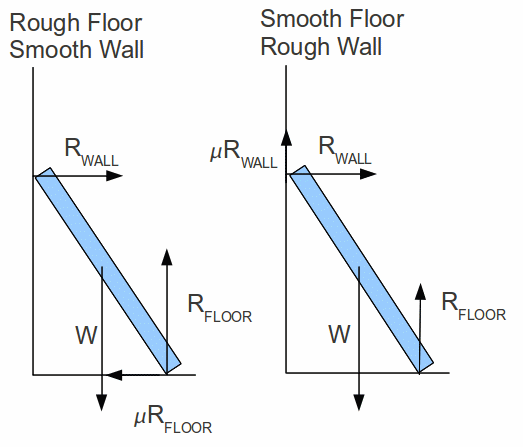Problems involving ladders usually involve taking moments and resolving vertically and horizontally. There are several points to remember:
1. A reaction at a surface can always be resolved into two components.
a) A Normal Reaction![]() which always acts perpendicular to a surface.
which always acts perpendicular to a surface.
b) A Force of friction![]() which always acts parallel to a surface. The relationship between
which always acts parallel to a surface. The relationship between![]() and
and![]() is
is![]() is limiting friction – it is the maximum possible value if the friction force. In practice we often taken friction as equal to the limiting value.
is limiting friction – it is the maximum possible value if the friction force. In practice we often taken friction as equal to the limiting value.
2. If a surface is smooth, there is no frictional force, only a normal reaction. There can never be a frictional force with no normal reaction.
3. It is often best to take moments about that point at which friction acts, especially if neither the frictional force nor the normal reaction force is known.
4. If the ladder – shown in the diagrams below as a rectangle - is uniform, the centre of gravity is at the centre of the ladder.

The ladder is usually assumed to be rigid, so that it does not bend or sag when a weight is put on it.
